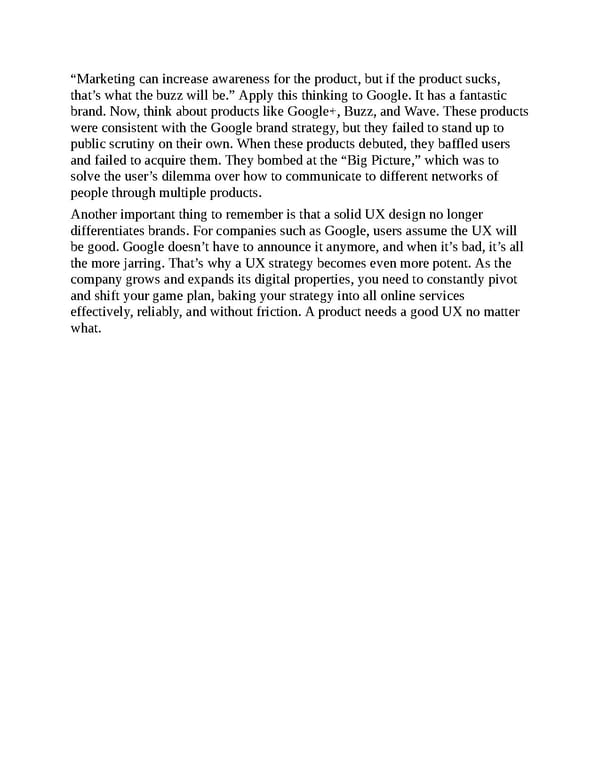“Marketing can increase awareness for the product, but if the product sucks, that’s what the buzz will be.” Apply this thinking to Google. It has a fantastic brand. Now, think about products like Google+, Buzz, and Wave. These products were consistent with the Google brand strategy, but they failed to stand up to public scrutiny on their own. When these products debuted, they baffled users and failed to acquire them. They bombed at the “Big Picture,” which was to solve the user’s dilemma over how to communicate to different networks of people through multiple products. Another important thing to remember is that a solid UX design no longer differentiates brands. For companies such as Google, users assume the UX will be good. Google doesn’t have to announce it anymore, and when it’s bad, it’s all the more jarring. That’s why a UX strategy becomes even more potent. As the company grows and expands its digital properties, you need to constantly pivot and shift your game plan, baking your strategy into all online services effectively, reliably, and without friction. A product needs a good UX no matter what.
 UX Strategy: How to Devise Innovative Digital Products that People Want Page 18 Page 20
UX Strategy: How to Devise Innovative Digital Products that People Want Page 18 Page 20